On Saturday December 5th 2015, my friend Deb and I set off for Haystack at 8:30am. Wearing bright colours because of rifle hunting season, temperatures were just above the freezing mark. Following a flat wet trail up to the turnoff, we passed a old ruin beside the trail. We began to encounter light snow cover around 2000ft at the same time crossing a stream with an old bridge foundation. Climbing gradually, the snow cover became more pronounced and when we hit the steepest part of the ascent we climbed a mix of wet rock and ice. The snow was very grippy underfoot, even over wet rock, so we didn't feel the need to wear microspikes. Throughout the day, the trees constantly dripped water and snow bombs as temperatures rose. We reached the clouded summit at 2864ft/873m elevation.
Hike Totals: 4208 feet of ascent, 19 km/12 miles, 7hours 40mins.

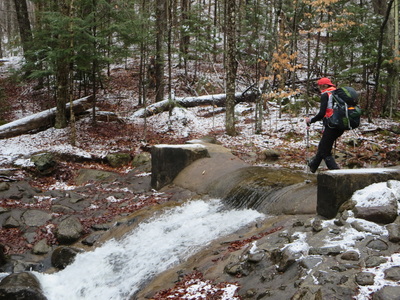
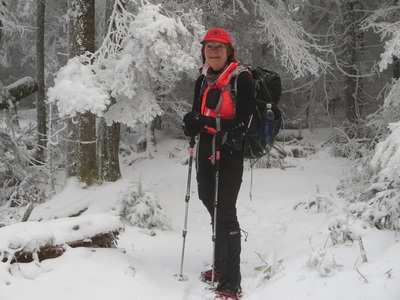
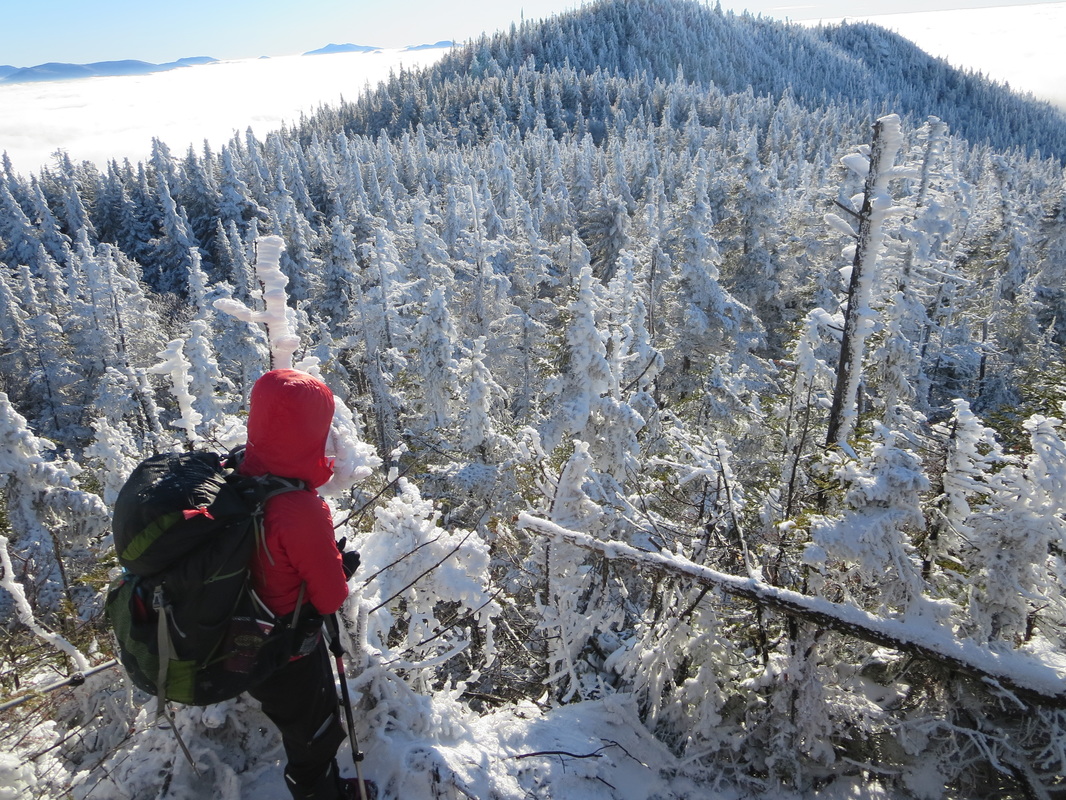
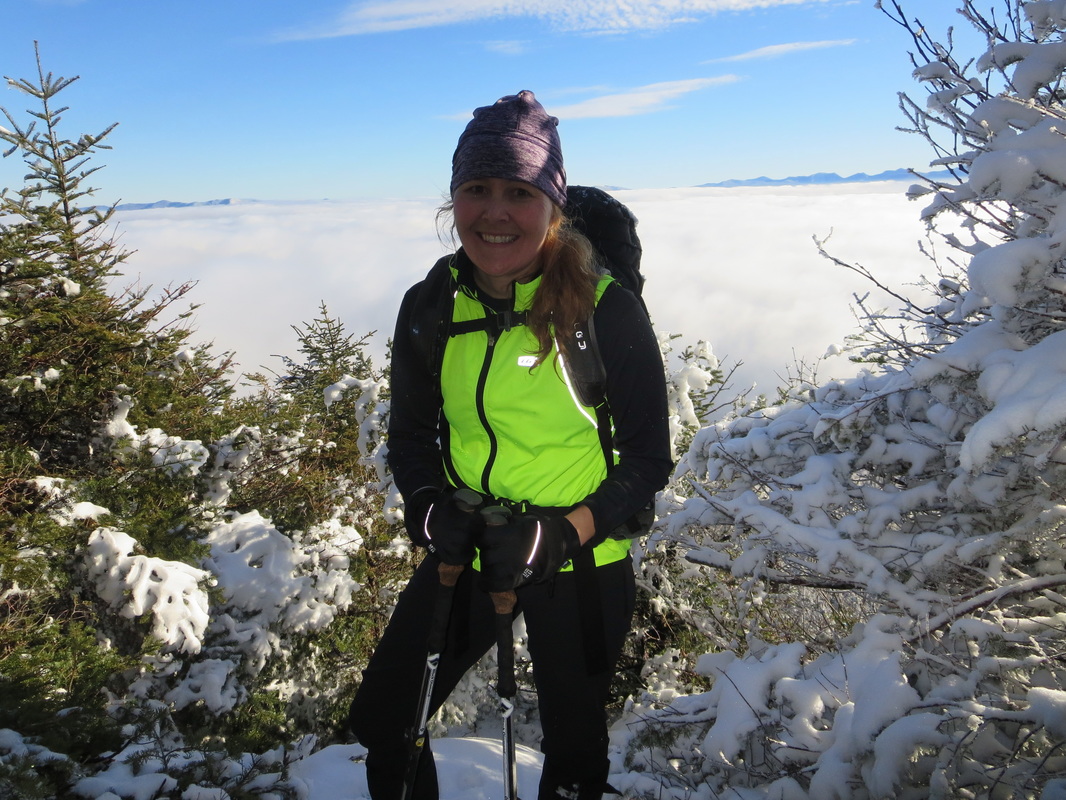
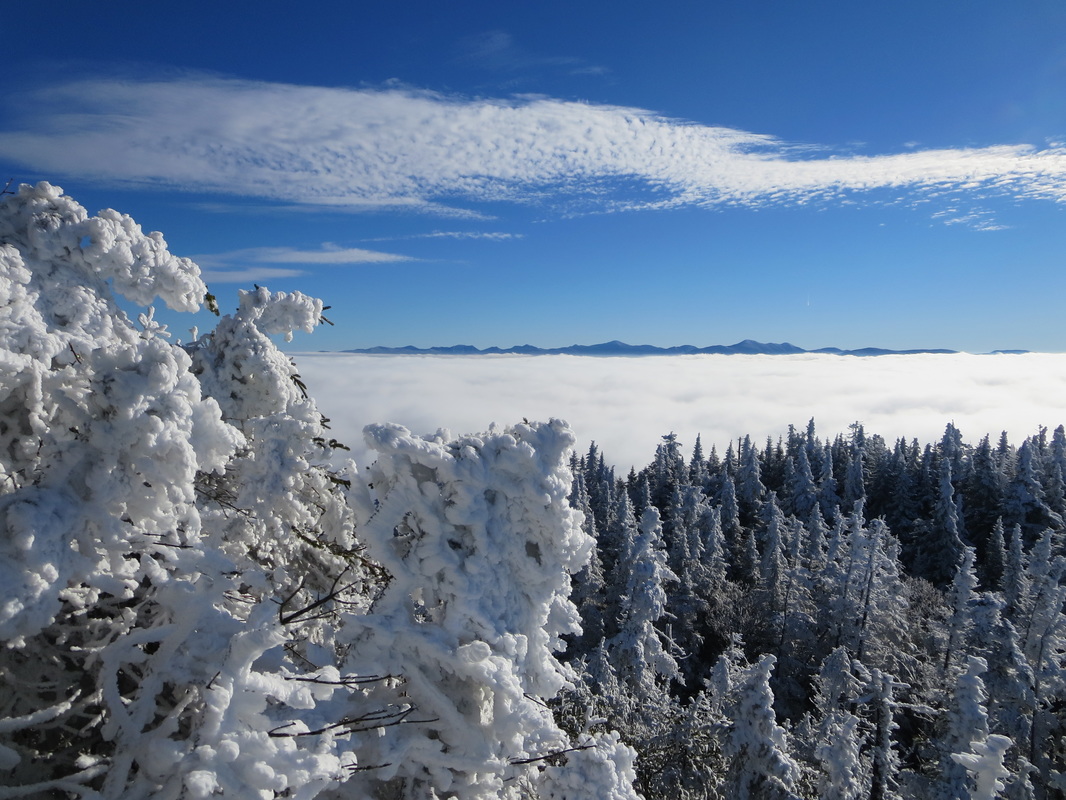
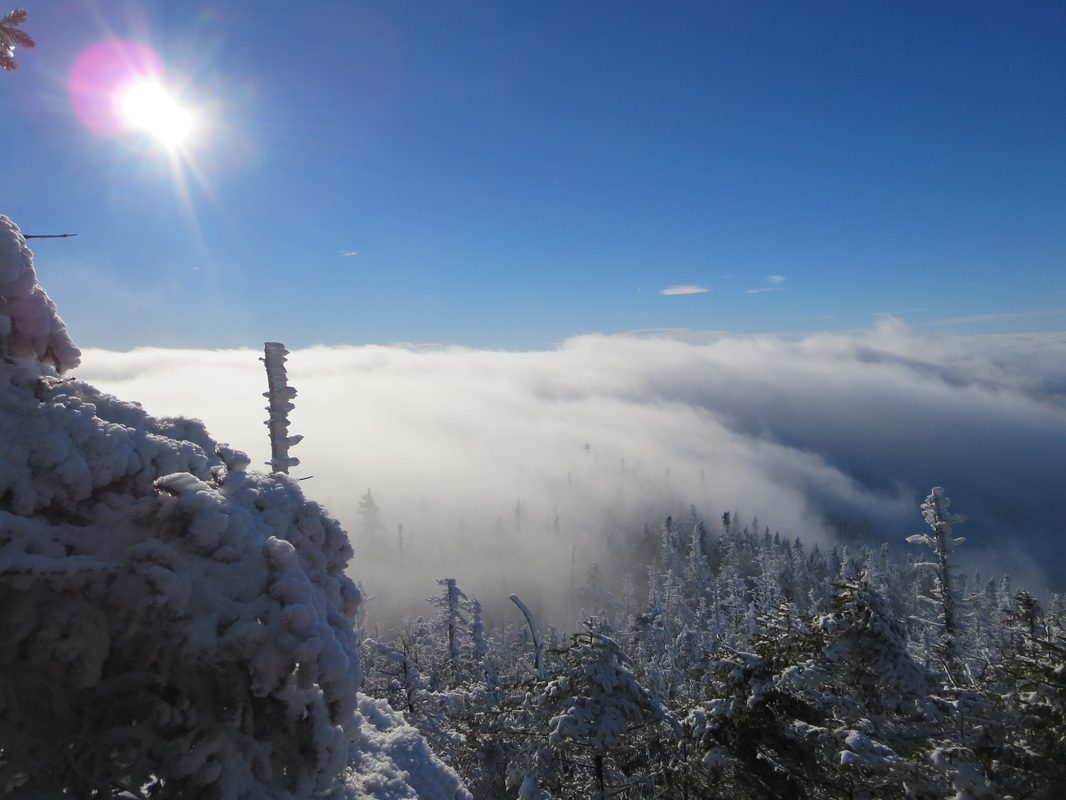
 RSS Feed
RSS Feed


